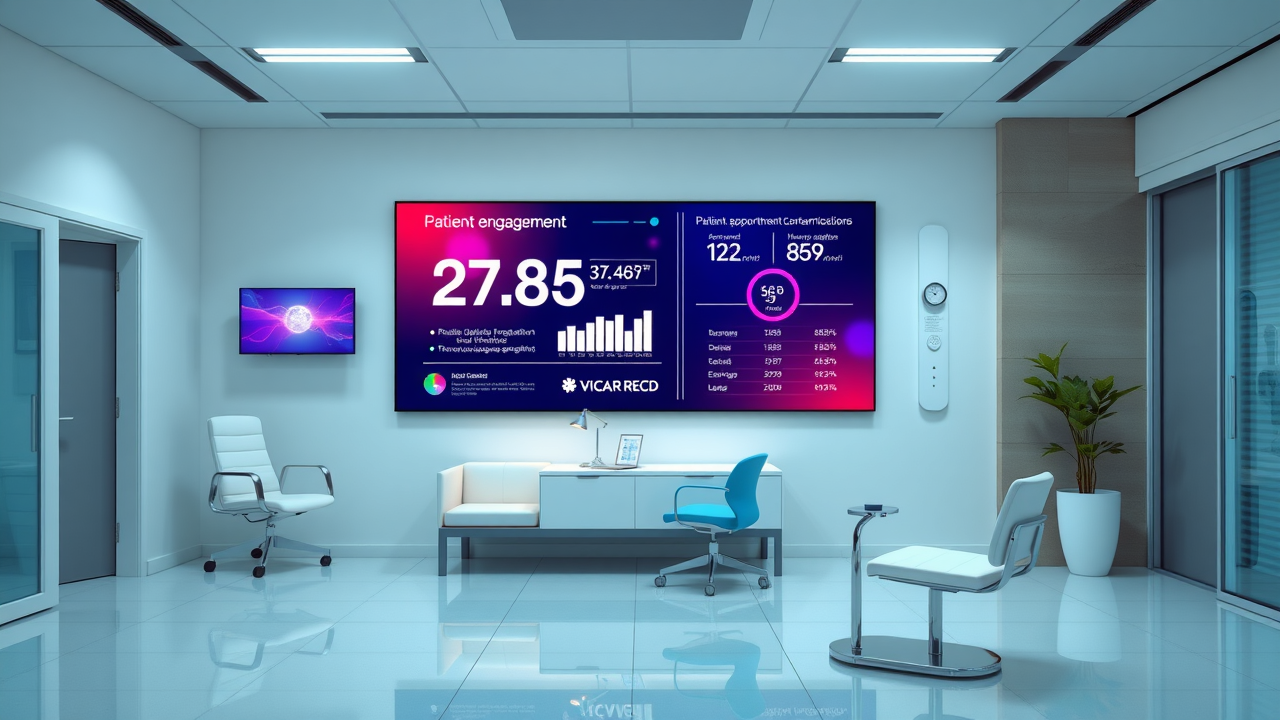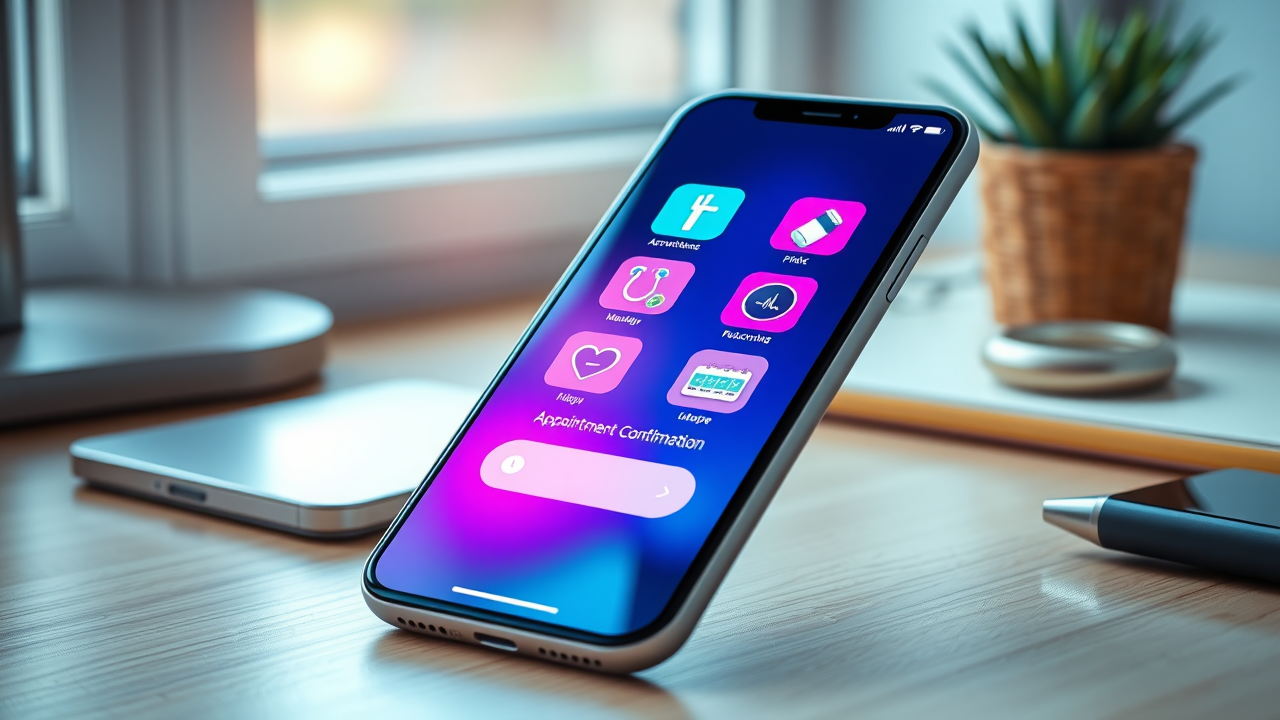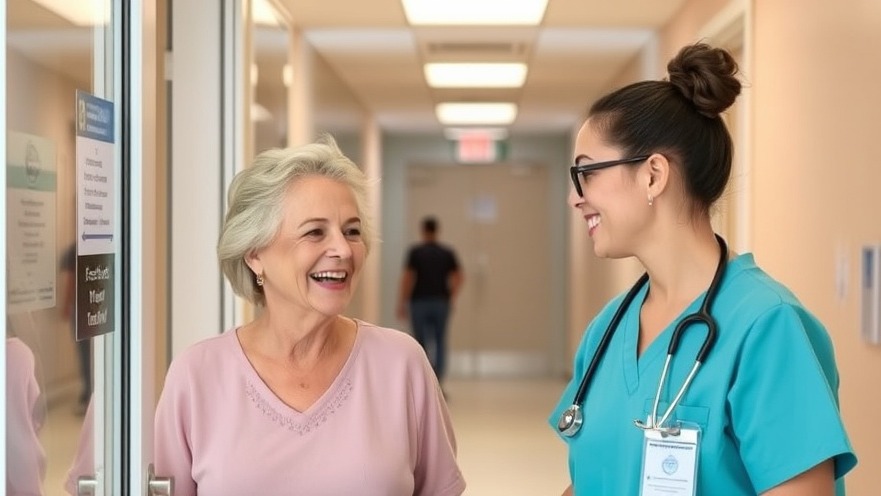
Imagine unlocking a hidden revenue stream in your healthcare practice —simply by re-engaging patients you’ve already served. Did you know that up to 60% of new revenue in a healthcare practice can come from reactivated patients? If patient retention and patient engagement feel like an uphill battle, you’re not alone. Many practices wrestle with patient reactivation, losing valuable connections and revenue opportunities every year. But, with the right strategies, you can turn the tide—bringing lost patients back and building a thriving, loyal patient base.
Let’s discover why reactivation holds the key to a successful practice and how you can master this important skill. By the end of this guide, you’ll know how to identify lost patients, select the optimal reactivation strategies, and leverage technology for a seamless, impactful experience. More importantly, you’ll be empowered to grow your practice with confidence, ensuring every patient is engaged, retained, and valued.
Why Patient Reactivation Is Important for Healthcare Practices: A Startling Statistic
In a field where every active patient counts, overlooking patient reactivation can mean missing out on a major revenue driver. Healthcare practices spend significant effort and resources acquiring new patients, but bringing inactive patients back is often more cost-effective and leads to higher retention rates. If your practice isn’t reaching out to lost patients, you could be leaving a significant portion of your potential untapped. Proactively addressing patient retention through reactivation isn’t just a good idea—it is essential for lasting growth and stability.
Consider the compounding impact on your practice’s bottom line: not only do reactivated patients generate new appointments and revenue, but they’re also likelier to refer others, boosting your patient base. Emphasizing patient reactivation is about more than just filling schedules—it’s about laying the foundation for a more resilient, profitable healthcare practice that stands out in today’s competitive environment.

Understanding Patient Reactivation: Definition, Value, and Core Principles
Patient reactivation is the process of reaching out to and re-engaging patients who haven’t visited your practice within a specified timeframe, making them inactive patients or “lost.” Reactivation puts your focus on patients who already know your staff, understand your care, and once trusted your services. These connections make it easier and more cost-effective to bring them back, compared to acquiring brand-new patients.
At its core, the value of patient reactivation lies in nurturing established relationships. It means using your patient data to identify those who have dropped off and proactively offering reasons—like updated services, personalized communications, or helpful reminders—to return. Pairing these efforts with retention-focused strategies builds a sustainable cycle where patients feel cared for and consistently return.
Patient Reactivation vs Patient Retention: Clarifying the Concepts
A successful healthcare practice knows the distinct roles of retention and reactivation. Patient retention centers on maintaining the engagement and loyalty of existing or active patients, using communication, education, and ongoing care to solidify those relationships. On the other hand, patient reactivation focuses on “winning back” inactive patients —those who have fallen out of touch or missed appointments. Both are critical for growing and maintaining your patient base, but each requires its own tailored approach.
Understanding when a patient shifts from active to inactive, and applying the right technique, is important. Retention strategies include delivering consistent care, providing education, and fostering regular touchpoints, while reactivation campaigns rely on targeted outreach—such as email marketing and text messages —and personalized invitations to return. Mastery of these concepts ensures that every patient interaction is meaningful and supports your practice’s goals.
Comparison of Patient Reactivation and Patient Retention | ||
Definition |
Main Focus |
Common Tactics |
|---|---|---|
Patient Reactivation |
Bringing back inactive or lost patients |
Reactivation campaigns, email/text outreach |
Patient Retention |
Keeping active patients engaged and loyal |
Engagement, education, regular communication |

Why Patient Reactivation Matters for Healthcare Practice Growth
With rising acquisition costs and increased competition, focusing on reactivating patients who already know and trust your practice is an undeniable growth lever. These patients offer instant familiarity, a shorter decision cycle, and a high likelihood of follow-through when contacted directly. Unlike cold leads, lost patients need fewer touchpoints, and each successful reactivation makes your marketing campaign more efficient.
Besides financial benefits, reactivating patients highlights your practice’s commitment to their well-being. Personalized outreach fosters loyalty and shows patients they’re valued, not just another number. As your engagement efforts expand, you’ll see a healthy boost in patient retention rates, word-of-mouth referrals, and a stronger reputation in your community—all of which contribute to a successful, growth-oriented healthcare practice.

Spotting Lost Patients and Opportunities for Patient Reactivation
To reap the benefits of patient reactivation, you must first know how to spot lost patients —patients who once accessed care but no longer do. These may be individuals who missed a scheduled visit, stopped responding to appointment reminders, or simply faded away over time. Effective patient data analysis is the starting point for any successful reactivation campaign, helping to systematically identify the opportunity for reconnection.
Many practices overlook inactive patients simply because they lack the tools or processes to track them. When clinics harness their patient data —such as visit history, missed appointment logs, and previous communication—it becomes clear which patients could benefit from targeted outreach. Proactively finding and prioritizing these patients for personalized campaigns can transform missed opportunities into booked appointments, ensuring a steady flow of patients and revenue.
Identifying Lost Patients via Patient Data Analysis
The first step to reactivating lost patients is leveraging your patient data to pinpoint who they are. By reviewing electronic health records, appointment schedules, and communication logs, your team can easily spot gaps—patients who haven’t scheduled a follow-up, missed a recent visit, or haven’t been seen within a certain timeframe. This profile allows you to segment inactive patients and prioritize those with the greatest potential for re-engagement.
Data-driven insights guide your outreach so you invest time and resources where they’ll make the most impact. For example, a patient who missed a single appointment may need just a gentle reminder, whereas someone absent for a year may require a more comprehensive, personalized invitation to return. The heart of effective patient reactivation is understanding what your records reveal—and acting promptly on that valuable information.
Common Triggers for Patient Churn and Unrealized Retention Opportunities
Before making the call or sending out an email, it's vital to understand what causes patients to become inactive. Common triggers for patient churn include missed appointments, unsatisfactory care experiences, lack of personalized communication, inconvenient scheduling, or forgetfulness. Sometimes, patients simply get busy and lose touch, or they may have misunderstood their care plan.
Overlooking these subtle cues can lead to missed retention opportunities. Regularly reviewing feedback, appointment logs, and missed visit trends can uncover systemic issues, such as inconvenient office hours or impersonal appointment reminders.
Addressing these gaps proactively, rather than reactively, positions your healthcare practice as attentive and committed to excellent patient care. Every lost patient is an opportunity—if you’re equipped to recognize and resolve the cause of their disengagement.

Key Patient Reactivation Strategies for Modern Healthcare Practices
Revitalizing your practice’s connection with inactive patients demands smart strategy and modern tools. Today’s most effective patient reactivation efforts include multi-channel outreach, robust data analysis, and personalized messaging. Here’s how you can start winning lost patients back through actionable, tested steps.
Mixing digital and personal touchpoints—like email marketing, text messages, and even a classic phone call —creates a wider net and a more personalized experience. Digital campaigns are especially powerful, saving time for your staff and delivering messages directly to patients. These methods, used as part of a cohesive strategy, can turn disengaged patients into loyal, active patients once again.
Designing an Effective Reactivation Campaign for Lost Patients
A robust reactivation campaign starts with clear goals and a focused message tailored for lost patients. Segment your list by last appointment date, reason for the lapse, and previous communication history. Next, design a campaign that uses multiple touchpoints—such as personalized emails, polite phone calls, and targeted text messages —so each patient feels individually valued.
Remember that timing and relevance matter. Schedule your outreach around significant dates (e.g., one-year follow-up), personalize each interaction with patient names and relevant services, and always provide a direct call-to-action. For best results, combine data analysis —such as preferred communication method or previous visit type—to further increase the chances of a positive response. The most successful practices continually refine their approach, learning from which messages and channels deliver the best results.
Patient Reactivation Using Email Marketing: Tips and Templates
Email marketing remains a cornerstone of effective patient reactivation. Well-crafted emails can entice inactive patients back by reminding them of overdue check-ups, introducing new services, or simply expressing that they’re missed. Begin with a subject line that grabs attention (“We haven’t seen you in a while—let’s reconnect!”) and keep your messaging clear and friendly.
Email templates should include the patient’s name, express genuine care, and offer a simple way to book an appointment—such as a clickable scheduling link or an invitation to reply for a phone call. Add helpful resources and keep the tone positive. Testing different messages and measuring open/click rates will help you refine your email marketing for the best results. Consider automating these campaigns so every reactivation opportunity is captured effortlessly.
Using Text Messages for Immediate Patient Reactivation Results
When urgency is key, text messages deliver exceptional reactivation results. Short, friendly reminders reach patients directly on their phones, prompting quick action—especially if you include easy reply options or booking links. Be sure to obtain proper consent and comply with privacy laws (such as HIPAA) before deploying text campaigns.
Texts can remind patients about missed appointments, offer a limited-time incentive, or simply say you’re available to help. Pair them with appointment reminders for double the impact. Timing matters—sending a text soon after a missed appointment increases the chance that the patient responds. With open rates above 90%, texts are an indispensable tool in any modern reactivation strategy.

Boosting Patient Retention Rate Through Engagement and Appointment Reminders
Reactivating patients is only the start; nurturing long-term relationships through ongoing engagement keeps your patient retention rate strong. Strategies that combine reactivation with continual reminders and meaningful touchpoints help maintain trust and minimize churn. The result is a practice filled with loyal, engaged patients who feel valued and supported at every step of their care journey.
Effective use of appointment reminders —paired with digital tools that foster interaction—ensures that patients never feel forgotten. The more you personalize these touchpoints, the higher your retention rates will climb, translating to long-term stability and success.
Leveraging Appointment Reminders to Reactivate Patients and Reduce No-shows
Automated appointment reminders through email, text messages, or phone calls dramatically decrease missed appointment rates. A customizable system allows you to target both active patients and those who haven’t scheduled in some time. Consider sending reminders several days prior to the visit, then again on the day-of, offering an easy way to confirm or reschedule.
Integrating reminders into your patient reactivation framework means fewer scheduling gaps and more filled slots. Patients who receive thoughtful reminders are more likely to stay engaged, feel cared for, and rebook in advance—key ingredients to a high-value, retention-focused practice.
Integrating Patient Engagement Tools for Higher Retention Rates
The best patient retention strategies tap into engagement tools designed to keep patients involved and aware. Systems like online portals, mobile apps, and interactive surveys not only make it easier for patients to communicate and schedule visits, but also reinforce the sense that their care matters. These tools provide opportunities for patients to ask questions, access health information, and complete pre-visit forms—reducing hassle and boosting satisfaction.
With more touchpoints, inactive patients have extra reasons to re-engage before becoming fully disengaged. Patients who use engagement tools feel empowered; they’re more likely to book routine care, return for follow-ups, and recommend your practice. A seamless digital experience is no longer optional—it’s a core component of every modern healthcare practice.

Data-Driven Patient Reactivation: Tracking Results and Improving Strategies
Data is your secret weapon for mastering patient reactivation. Every campaign should be measured for effectiveness—tracking not just who responded, but why and how. By analyzing outcomes, you can discover which channels, messages, and timing yield the highest reactivation and retention rates. This ongoing feedback loop enables your team to continually refine strategies for even better results.
Smart clinics monitor metrics like appointments booked by previously inactive patients, reactivation campaign open/click rates, and resulting revenue. Use these benchmarks to compare campaigns over time and prioritize the tactics that deliver the most ROI.
Measuring the Success of Reactivation Campaigns with Patient Data
Success in patient reactivation is defined by measurable outcomes—how many lost patients returned, how much additional revenue was achieved, and which outreach techniques worked best. Routine tracking of re-engagement statistics, appointment scheduling trends, and patient satisfaction surveys paints a clear picture of what drives results in your practice.
Always compare success rates between channels: do text messages outperform phone calls ? Does a follow-up email marketing series work better than a single touchpoint? Use this insight to scale winning campaigns and pivot from underperforming ones. With a data-driven approach, patient reactivation becomes a predictable contributor to your growth strategy.

The Role of the Healthcare Team in Sustaining Patient Reactivation Efforts
No reactivation strategy is effective without the support of a well-trained, motivated team. From administrative staff to care providers, every member of your clinic plays a role in creating positive experiences that encourage patients to return. Building a culture around patient retention and engagement ensures that every touchpoint, from a check-in call to a follow-up reminder, supports your reactivation goals.
When the entire team is aligned, your clinic can deliver seamless, value-driven communication designed to keep patients connected—and coming back.
Staff Training on Patient Reactivation and Retention Best Practices
Investing in ongoing staff training pays off in patient reactivation results. Equip your team with techniques for effective communication, personalizing outreach, and identifying signs of patient disengagement. Regular workshops or coaching sessions on new tools such as email marketing platforms or patient data dashboards keep everyone focused and prepared.
Sharing real-world success stories and best practices motivates staff and reinforces the importance of consistent, caring outreach at every stage of the patient journey.
Continuous Improvement: Building a Reactivation-focused Practice Culture
Creating a culture where reactivation is everyone’s responsibility encourages innovation and accountability. Foster open discussion of campaign results, celebrate reactivation wins, and actively seek patient feedback to inform improvements. Encourage each team member to contribute ideas and suggestions based on their frontline insights.
Over time, this continuous improvement cycle leads to a practice known for its proactive, engaged staff and high retention rates —making it easier to reactivate patients and attract new ones alike.

Common Pitfalls to Avoid in Patient Reactivation Campaigns
Many patient reactivation campaigns fail because they overlook key elements that drive results. Generic, non-personalized messages often fall flat, while outdated or inaccurate patient data prevents outreach from reaching the right people. Patients respond best when communication is tailored to their needs and supported by reliable information.
Another common oversight is neglecting digital channels like email and texting, which offer quick, convenient ways to reach busy patients. Equally important is tracking metrics to see what works and refining strategies over time. Avoiding these pitfalls ensures your reactivation efforts lead to measurable, long-term growth for your practice.

Top Takeaways for Patient Reactivation and Long-Term Patient Retention
Patient reactivation is more than filling empty appointment slots—it’s key to long-term practice growth. Using accurate data and digital tools like email, texting, and patient portals helps reconnect with inactive patients. The best campaigns are personalized and multi-channel, meeting patients where they are with relevant, timely messaging.
Lasting success depends on tracking results such as response rates and bookings, then refining strategies based on what works. Reactivation is a team effort—every staff member influences patient loyalty through positive, consistent experiences at every touchpoint.

Frequently Asked Questions about Patient Reactivation
What is patient reactivation?
Patient reactivation is the process of reaching out to patients who have not visited your practice for a while with the goal of encouraging them to return. It uses personalized communication, such as email marketing or text messages, to reconnect lost patients and help them re-engage with your clinic’s services and care.
How to reactivate patients?
To reactivate patients, start by identifying those who haven’t booked or attended an appointment in a set period using your patient data. Reach out with tailored communications—such as emails, texts, or phone calls —offering easy ways to schedule and emphasizing the value of returning. Personalization and clear calls to action drive the best results in any reactivation strategy.
What does a returning patient mean?
A returning patient is someone who was previously inactive or lost to your practice, but has re-engaged by booking an appointment or accessing care again. These patients have reconnected thanks to your reactivation campaigns or continuous engagement efforts.
What is it called when a patient comes back to the hospital?
When a patient comes back to the hospital after a period of absence, it’s often referred to as patient reactivation or readmission (depending on the context). In outpatient and primary care settings, it specifically means successfully re-engaging a former or inactive patient through targeted outreach.

Start Enhancing Your Patient Reactivation Plan Today for Measurable Results
Patient reactivation isn’t just about filling empty appointment slots—it’s about rebuilding relationships, improving retention, and driving long-term practice growth. By ensuring your patient data is accurate, crafting personalized outreach, and leveraging multiple channels like email, text, and phone calls, you can connect with patients in ways that resonate and inspire action. Every touchpoint, from the front desk to follow-up care, plays a vital role in creating a positive experience that brings patients back.
If you’re ready to turn patient reactivation into a consistent growth engine, it’s time to make it a team-wide priority. Learn how implementing targeted strategies, supported by accurate data and effective communication tools, can boost reactivation rates, strengthen loyalty, and position your practice for lasting success.
 Add Row
Add Row  Add
Add 




Write A Comment